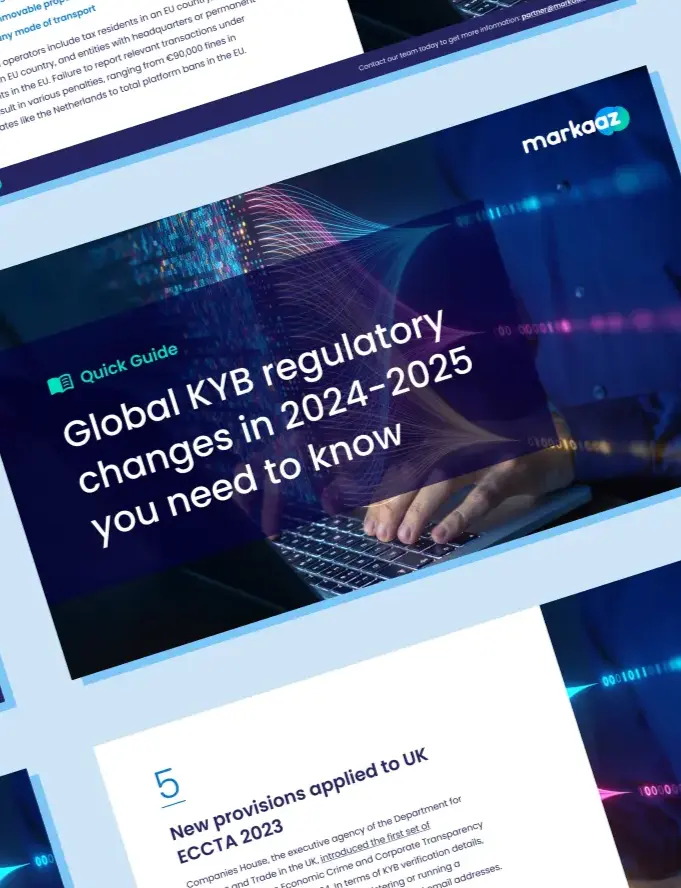As someone running a business, you likely know the importance of customer onboarding
No matter what kind of business you have, frictionless customer onboarding is an essential process to starting your relationships with customers and clients off on the right foot.
First impressions matter, and this applies to business as much as personal relationships. When someone first encounters your business, that initial perception of the brand to going to have a huge impact on how you’re seen in the future. In some cases, it may even impact how long someone stays with the company.
Talk to our team to learn how we can help you onboard better.
What do customers want from onboarding?
Customers want an onboarding process that teaches them to use a service or product while gaining value from it. They also want it to be quick and painless. It’s as simple as that. However, it can be more challenging to define depending on your specific business, which products and services you offer, and the customers who come to you for a solution.
The main goal of an onboarding process is to get your customers to continually use your product. You want your product to be so much a part of everyday life that people need to use it. After you create that level of value, the customer’s lifetime value increases, and customers can turn into advocates.
Reasons customers step back from a business

You could have the best possible product available, but if you can’t show that value to customers, they’re going to move on to something else. Reducing churn is important, but you also need to be aware of why it occurs in the first place. In many cases, that relates to the customer onboarding process, as seen in the following:
- A bad customer experience occurs.
- Customers are unsure how to use your project.
- Poor user experience or unneeded features overwhelm customers.
- They don’t experience value from using your product.
- Bugs or features that don’t work cause frustration.
- The onboarding process is too long or cumbersome
Not all customers will stick around. Some will move to competitors, while others may no longer need what you have to offer. However, decreasing churn is important while also bringing in new customers through marketing and sales.
In addition, the tips below to improve your customer onboarding can help. It keeps customers interested in what you are selling and ensures they succeed through the help of your products and services.
#1: Start onboarding early
Some companies don’t begin onboarding until after a lead is a customer. However, that’s too late for many. The moment someone downloads a free tool or signs up for a trial is time to start the onboarding process.
Even if the free tool has little to do with your paid products, automated onboarding is quick to set up and lets you introduce your business. The sooner someone has access to the success possible with your product, the more likely they are to become a paid customer.
Product tours are one method of sharing the services or products that you offer. Make sure you loop in a way for customers to get answers to questions or consider sending out a series of tips to their inboxes, so they have support whenever it’s needed.
#2: Introduce customer success
As you work to get payments from potential customers, you should also prepare users to work with customer success. There should never be a moment when a user doesn’t know what to do next. A formal handoff in a meeting with a member of sales can introduce the customer to the product and the team behind it.
It’s best to have this occur as early as possible. However, if nothing else, this meeting should occur when a contract is signed by the customer. If you use excellent customer success management software, this transition is simple. It can be booked automatically, and all the information sent out to those who will be a part of the introduction.
#3: Personalize processes
As you move a user through the process of becoming a customer, they often answer questions through surveys or web forms about themselves or the company they represent. This information, as well as any other data you have about customers, can and should be used to personalize the onboarding experience.
Let’s say you have a dozen features incorporated into your product or service, but one customer only needs three of them. Your onboarding process for that person can focus largely on the features they are most likely to use. After they know how to use those features, you can provide insight into how to use other features with the ones that are already in use.
#4: Offer a self-serve onboarding option
Some users prefer to learn about things on their own rather than having someone teach them. It’s a great idea to facilitate that through a checklist in the product or an email. This lets them work through things on their own but leaves the option open to reach out if they need additional help.
Many people like to find answers on their own. For instance, about 90% of consumers will watch a video to learn about an app or product. Some of the support sections to include on your site are:
- How-to videos for features in your product
- Useful articles through a knowledge base
- A search function
- FAQs to find answers to the most common questions
#5: Reach out
Every small business has different products and services, so we can’t say what your milestones are. However, you can come up with them on your own if you know what customers expect and want to achieve using the products you offer them.
Let’s say you have an email app, and it’s used to send bulk messages out to clients. You might use that as a way to determine when to reach out. After they send out that first mass message, you could send them a message of congratulations for making it that far. These messages can delve into extra features that will be useful in the future.
#6: Acquire feedback
As you work to create a better onboarding experience, it’s crucial to know what’s working well and what’s not. Asking customers about these things is a good place to start. You could call them for check-in, send them a survey about features they use, or email them asking for feedback.
Once you have feedback available, make sure you use it. This shows customers that you care what they think. If you can quickly do something to improve onboarding or answer a question, make that a priority.
Even customers who have stopped using your products may have great input for the future of your small business. Reach out and see what these people have to say. You may find out new ways to retain customers or learn about features that people want to see in our services.
Final thoughts
When you have an excellent onboarding process, it gets things off to a fantastic start with customers. It can be the start of a beautiful relationship where the customer is happy with you. With so much emphasis on first impressions, improving your onboarding experience is a great way to improve your business and ensure its success in the future.
Even if you already have an onboarding process, there’s nothing to say that you shouldn’t make changes to improve it. While this can take some time, it will help things run more efficiently and could save time in the future. If your onboarding process is something you haven’t put a lot of thought into, now is a good time to change that.
Markaaz has developed a customer onboarding API that is powered by our proprietary database of over 300 million global businesses, 98% of which are small businesses. Our low-code API plus directly into your onboarding flow to give you real-time verification of your potential customer’s firmographic data, business health metrics, and compliance and AML standing.
Talk to our team to get a walkthrough of our enterprise onboarding solutions or to learn more.



